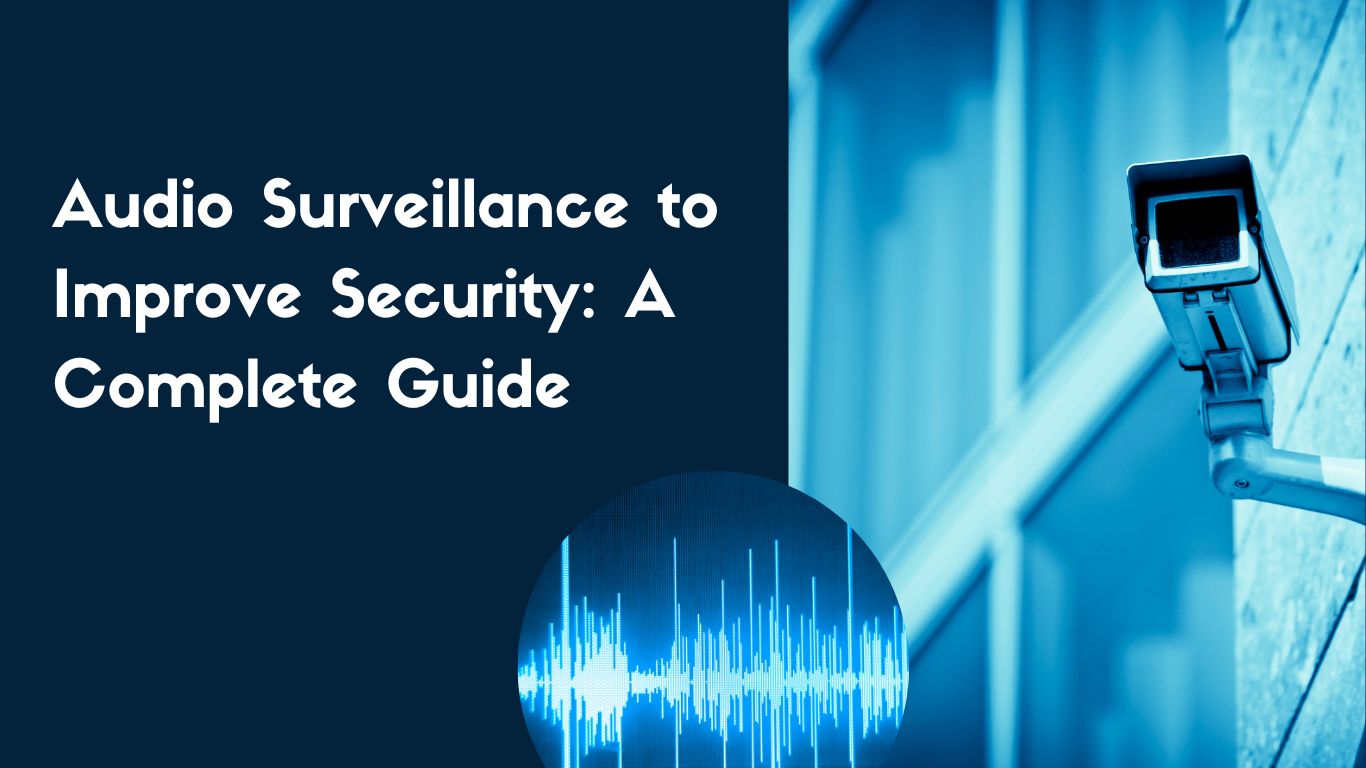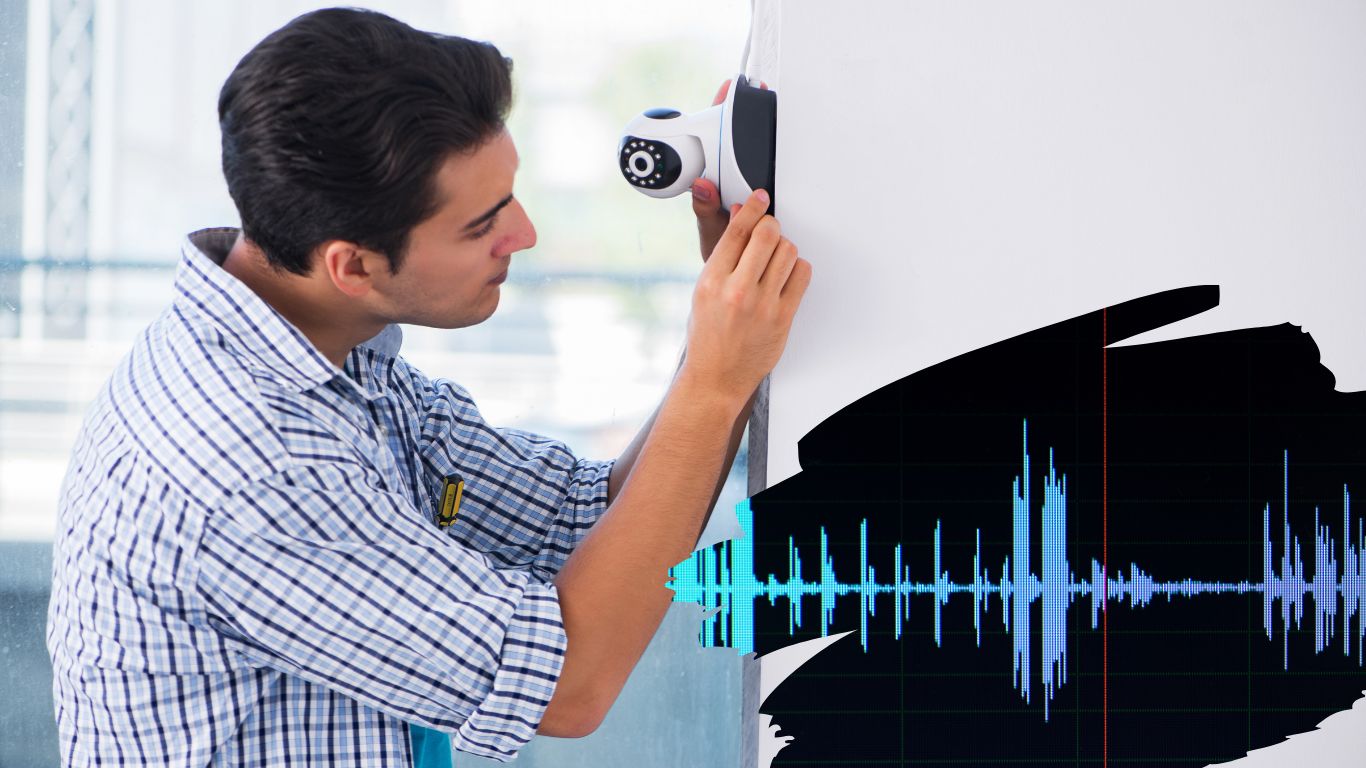Audio Surveillance to Improve Security: A Complete Guide

Audio surveillance systems are a highly effective way of monitoring and protecting businesses and homes from potential threats. With the help of audio technology, it is now possible for security personnel to listen in on conversations happening within a certain area or room to gain a better understanding of what’s happening. This article will provide an overview of audio surveillance and how it can be used effectively to improve security.
What is Audio Surveillance?
Audio surveillance technology uses microphones to pick up sounds in a specific area or room, allowing security personnel to monitor conversations, hear any suspicious noises within the vicinity, or detect intruders before they enter the premises. This type of audio recording can also help identify people who have entered without permission and anyone else who may have been part of a possible crime scene.
How Does Audio Surveillance Work?
Audio surveillance works by using microphones that are equipped with special software algorithms and processors. These algorithms scan incoming signals for patterns that could indicate suspicious activity or individuals entering or leaving the area being monitored. When one of these patterns is found, an alarm is sent, which alerts security personnel so they can take action and investigate further if necessary. Additionally, some audio-surveillance systems also come with motion-detection capabilities that allow them to detect movements in an area not regularly seen through traditional visual surveillance systems such as CCTV cameras.
Benefits of Audio Surveillance
- The primary benefit of utilizing audio surveillance technology is its ability to offer additional layers of protection against potential threats and criminal activity without compromising privacy or constituting a nuisance to those living or working within the vicinity being monitored.
- Audio surveillance systems are cost-effective compared to other electronic security forms, like video monitoring systems, making them an appealing option for those looking for added protection but with limited budgets.
- Audio technology provides an added layer of evidence when it comes time for police investigations since recordings like conversations can be played back later on during questioning sessions if needed as legal proof containing crucial details about what happened at a particular place and time.
In addition, recordings may also be helpful in identifying suspects from their voice patterns even after they've left the premises monitored by an audio system— allowing authorities greater potential for making arrests quickly if necessary.
How to Choose the Right Audio Surveillance System for Your Needs
Audio surveillance systems can provide a range of benefits for those looking to gain extra security and safety. Before investing in any audio surveillance system, it is important to consider your specific needs and choose accordingly. Establishing your intended purpose at the outset will make researching properly and identifying products that meet your requirements easier. Be aware that although some systems are designed primarily to record audio, others offer additional features like motion detection or night vision capabilities. Furthermore, you may want to think ahead when picking out components, as many products are made with future expansion capabilities in mind. At the end of the day, choosing the right audio surveillance system for your needs involves careful consideration and research - but the payoff can be worth it!
Types of Audio Surveillance Systems Available in the Market
Audio surveillance systems are devices used to record and monitor sounds in a specific area. They come in a variety of forms and serve different purposes, including security, monitoring, and recording.

Wired Audio Surveillance Systems:
These systems use wired connections to transmit audio signals from the microphone to the recording device. They are typically more reliable than wireless systems, but they can be difficult to install and may require professional assistance.
Wireless Audio Surveillance Systems:
These systems use radio waves to transmit audio signals from the microphone to the recording device. They are typically easier to install and can be placed in areas where wired systems would be difficult to use. However, they may be subject to interference from other electronic devices.
Hidden Audio Surveillance Systems:
These systems are designed to be concealed and can be placed in areas where they are not easily visible. They are often used in undercover operations or for personal security. Examples include hidden cameras, voice-activated recorders, and miniature microphones.
Digital Audio Surveillance Systems:
These systems use digital technology to record and store audio. They typically provide higher-quality recordings than analog systems and allow for easy storage and retrieval of recorded audio.
Multi-Channel Audio Surveillance Systems:
These systems allow for the simultaneous recording of multiple audio channels, making them useful for monitoring large areas or multiple subjects. They are often used in security and law enforcement applications.
Risks Associated with Audio Surveillance Systems
It is important to be aware of the potential risks associated with using Audio surveillance systems, as they can have serious legal and privacy implications.
Legal Risks:
Audio surveillance systems are subject to laws and regulations regarding their use. In many jurisdictions, it is illegal to record audio without the consent of the person being recorded. Failure to comply with these laws can result in fines, legal action, and even criminal charges.
Privacy Risks:
Audio surveillance systems can be used to record private conversations without the knowledge or consent of the people involved. This can be a violation of privacy and can lead to legal action. It is important to be aware of the laws and regulations regarding audio surveillance in your area and the ethical implications of using these systems.
Technical Risks:
Audio surveillance systems can be vulnerable to technical issues such as interference, data loss, and hacking. These risks can compromise the integrity of the recordings and make them unreliable. It is important to use a high-quality system with proper security measures to minimize these risks.
Misuse Risks:
Audio surveillance systems can be misused by individuals with malicious intent. For example, they can be used to stalk or harass individuals or to gain sensitive information. It is important to have proper controls in place to prevent the misuse of these systems.
Damage to Reputation Risks:
Audio surveillance systems can damage the reputation of the person or organization that uses them if their use is perceived as unethical or invasive. This can lead to loss of trust, negative publicity, and legal repercussions.
Drawbacks
One major drawback associated with utilizing audio surveillance systems is the lack of personal privacy this type of setup often causes due to its use being so widespread in certain areas—as no one knows exactly when they may be heard by others nearby listening in on conversations or activities taking place around them which may feel intrusive over time.
Deploying such equipment requires considerable upfront costs. Maintaining them involves continual upkeep, which can add up quickly, especially when multiple units need replacing periodically due to potentially hazardous weather conditions causing damage over time (such as rain).
Such systems require extensive training not only for those installing/maintaining them but also for those operating them too (i.e., security staff), which increases overall operational costs significantly over time unless trained professionals are available and already familiar with how these types of devices work correctly from day one onwards each shift usually required twelve hours per shift minimum too!
Tips for Properly Installing Audio Surveillance Systems
Audio surveillance systems are a valuable tool for security and monitoring. Still, proper installation is crucial to ensure that they function correctly and provide accurate recordings. Here are some tips to help you properly install your audio surveillance system:
Plan the installation in advance:
Before installing your audio surveillance system, take the time to plan the installation. Consider the areas you want to monitor, the type of microphone you will use, and the location of the recording device. This will help you avoid mistakes and ensure your system is effective.
Follow the manufacturer's instructions:
Each audio surveillance system is different and will have its own specific installation instructions. Make sure to read and follow the manufacturer's instructions carefully to ensure that your system is installed correctly.
Choose the right microphone:
The microphone is the most important part of an audio surveillance system. Choose a microphone that is suitable for the environment you are monitoring. For example, if you are monitoring an outdoor area, you will need a weather-resistant microphone.
Position the microphone correctly:
Proper microphone placement is crucial to ensure that your system records accurate audio. The microphone should be placed in a location where it will pick up the desired audio while minimizing background noise.
Secure the microphone:
It's important to secure the microphone so that it doesn't move or get knocked over. This will ensure that your system continues to record accurate audio.
Test the system:
Once your audio surveillance system is installed, take the time to test it to ensure that it is working correctly. Make sure that the audio is clear and that the system is recording.
Regularly maintain the system:
Regularly check and maintain the system to ensure that it continues to work effectively. Clean the microphone, change the batteries, and check the connections to ensure that there is no damage.
Conclusion:
Audio surveillance is a powerful security measure that can be used in a variety of situations to improve safety and security. By understanding how audio surveillance works and what its benefits are, you can make an informed decision about whether or not it is right for your business or home. If you decide to implement audio surveillance, there are a few things to keep in mind to ensure that it is effective. First, ensure that the microphones are properly positioned and installed so they can pick up any relevant sounds. Second, consider using multiple microphones to cover different areas of the property. Finally, remember to regularly maintain and monitor the system to ensure that it is working properly. Implementing audio surveillance can be a great way to improve security at your business or home. Keep these tips in mind to make sure that it is effective.




